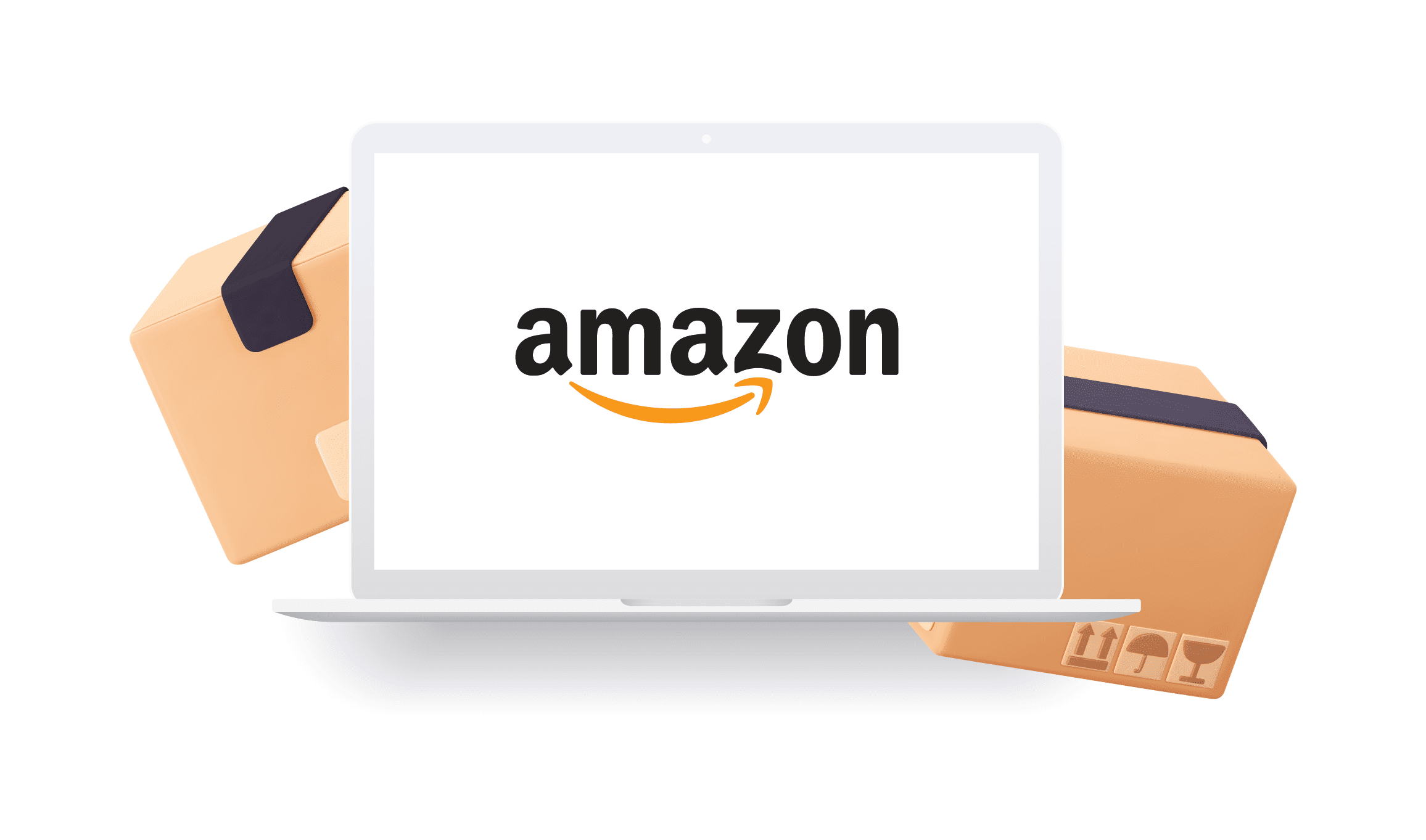Learn the ins and outs of selling on Amazon and how to leverage a multi-threaded Amazon fulfillment strategy to maximize your sales potential and increase margins.
Full-Service Support for Selling on Amazon
Selling on Amazon is a key strategy for product discovery, brand recognition, and overall top-line sales volume. Today, an estimated 40-50% of all ecommerce sales happen on Amazon, making it a necessary sales channel for most merchants and a primary channel for many.
If you’re a small to medium businesses (SMB) selling on Amazon, you know that fulfilling Amazon orders can often be a cost center and resource draining endeavor. It can be difficult to evaluate which of the available Amazon fulfillment methods is best-suited for your business. And with ever evolving fee structures and program requirements, it can be challenging to stay up-to-date and make informed decisions that optimize both cost and efficiency.
If you’re an Amazon seller looking to optimize your Amazon fulfillment strategy and decide which fulfillment method is best for you, you’re in luck. Ahead, you’ll find everything you need to know to choose the right solution for your business (hint: it’s probably more than just one).
Selling on Amazon Is Complicated
According to a merchant survey by Ware2Go, a UPS company, many SMBs are looking for guidance around the best Amazon seller model for their business. Nearly half (44%) of SMBs say they need help evaluating if Fulfillment by Amazon (FBA) is the best solution for Amazon fulfillment. Additionally, 41% need support allocating inventory across Amazon and other sales channels.
The truth is, for most Amazon sellers, it’s not an easy question to answer. With FBA, sellers automatically have Prime status, but Amazon limits customer interactions and control of their brand. Fulfillment by Merchant (FBM), on the other hand, offers access to customer data but not the Prime badge. Seller Fulfilled Prime (SFP) offers the best of both worlds – the Prime badge and brand control. However, 1- to 2-day delivery guarantees and Saturday fulfillment are difficult for most SMBs to comply with.
The answer for most merchants selling on Amazon is a combination of all of these solutions. It may look something like this:
- FBA for small, light-weight products
- FBM as a backup on FBA listings when FBA listings stockout
- SFP (for sellers who are eligible) for products that Amazon deems “oversized” or that move at a high velocity.
A multi-threaded Amazon fulfillment solution like this is the most effective, but when a different partner is handling each solution, the result is often unwieldy and inefficient operations.
And that’s just fulfillment. We haven’t even begun to talk about first-party vs.third-party inventory. It’s easy to see why many merchants feel overwhelmed by selling on Amazon.
The Basics of Selling on Amazon

First-Party Sellers
First-party inventory (Amazon 1P) is selling wholesale directly to Amazon. The seller is paid up-front, and once it’s out of the sellers’ hands, Amazon lists, sells, and fulfills the product. 1P is an invitation-only program, and it’s managed through Vendor Central.
Third-Party Sellers
Third-party sellers allow Amazon to have a broader product catalog, and have significantly grown Amazon’s market share. In fact, third party sales currently make up around 60% of total Amazon sales.
Third-party sellers manage their own listings and sales and can choose whether they outsource fulfillment to Amazon or fulfill their orders themselves. Signing up for an account is simple, and the account is managed through Seller Central.
Third-Party Seller Fulfillment Options
Once a sale is made, sellers have three options for actually fulfilling orders and delivering to their customers.
1. Fulfillment by Amazon (FBA)
With Fulfillment by Amazon (FBA), the seller outsources fulfillment to Amazon Fulfillment. They ship inventory to an Amazon hub, and Amazon handles fulfillment, taking a fee from the final cost of sale.
FBA automatically gives a seller Prime status, which often results in higher sales. However, Amazon retains valuable customer data that sellers could otherwise use for remarketing and building customer relationships. Products also arrive in Prime-branded packaging, which can lead customers to associate the product with Amazon rather than the seller’s brand.
FBA also has strict standards for prepping inventory, and many merchants rely on an outsourced fulfillment partner to prepare inventory to enter Amazon’s fulfillment network. According to our merchant survey, 41% of merchants selling on Amazon are in need of a fulfillment partner who can prep and ship inventory for FBA.
2. Fulfillment by Merchant (FBM)
With Fulfillment by Merchant (FBM), the seller handles fulfillment, either in-house or through a fulfillment partner. FBM does not include Prime status, but sellers can still offer and advertise free 2-day shipping if they have the fulfillment infrastructure to support it.
Especially for sellers in less competitive product categories, offering 2-day shipping through FBM is a great strategy for success on Amazon without the Prime badge because according to a recent consumer survey, Prime shoppers are not loyal to Prime products. 41% are simply looking for fast shipping, regardless of Prime status.
FBM does allow sellers to access valuable customer data for remarketing and nurturing customers.
3. Seller Fulfilled Prime (SFP)
Seller Fulfilled Prime (SFP) offers the best of both worlds – access to customer data and Prime status. Like FBM, sellers handle fulfillment themselves, either in-house or through a fulfillment partner.
The SFP program has long been closed to new applicants but reopens October 1, 2023 with enhanced delivery requirements. Click here to learn everything about SFP program requirements and how to meet them.
How Austin Bazaar Scaled Their Amazon Business
Experienced Amazon seller Austin Bazaar leveraged FBA exclusively for fulfillment when they first started selling on Amazon, but in time, they began to see limitations of a single-threaded approach to Amazon fulfillment. Between hidden fees, strict inventory requirements, and a too-lenient returns policy, Austin Bazaar saw that FBA was damaging their margins and limiting control over their inventory and brand reputation.
That’s why they chose to move the larger products in their catalog out of FBA and move them into SFP. FBA continued to be the most price competitive for small, lightweight products. And FBM rounded out their strategy for products with few competitors on Amazon and as a backup method for stockouts on FBA.
They chose to outsource their SFP volume to Ware2Go, a UPS Company, in order to meet the stringent Prime delivery requirements without building out internal resources. They worked close with Ware2Go’s dedicated Amazon fulfillment team to implement a SKU-level strategy in order to realize the most cost savings across their entire product catalog.
To learn more about Austin Bazaar’s Amazon strategy, watch the video below for an in-depth interview with founder and CEO Suman Singh.
Selling on Amazon, Simplified
Are you an Amazon seller looking to simplify your supply chain? Ware2Go is a UPS-owned fulfillment provider with a network of 30+ warehouses connected by best-in-class fulfillment technology. Our technology integrates all of your sales channels – from ecommerce marketplaces to your direct-to-consumer storefront – so you can manage inventory and order fulfillment across all sales channels through a single platform and network.
Learn more about our solutions here.



